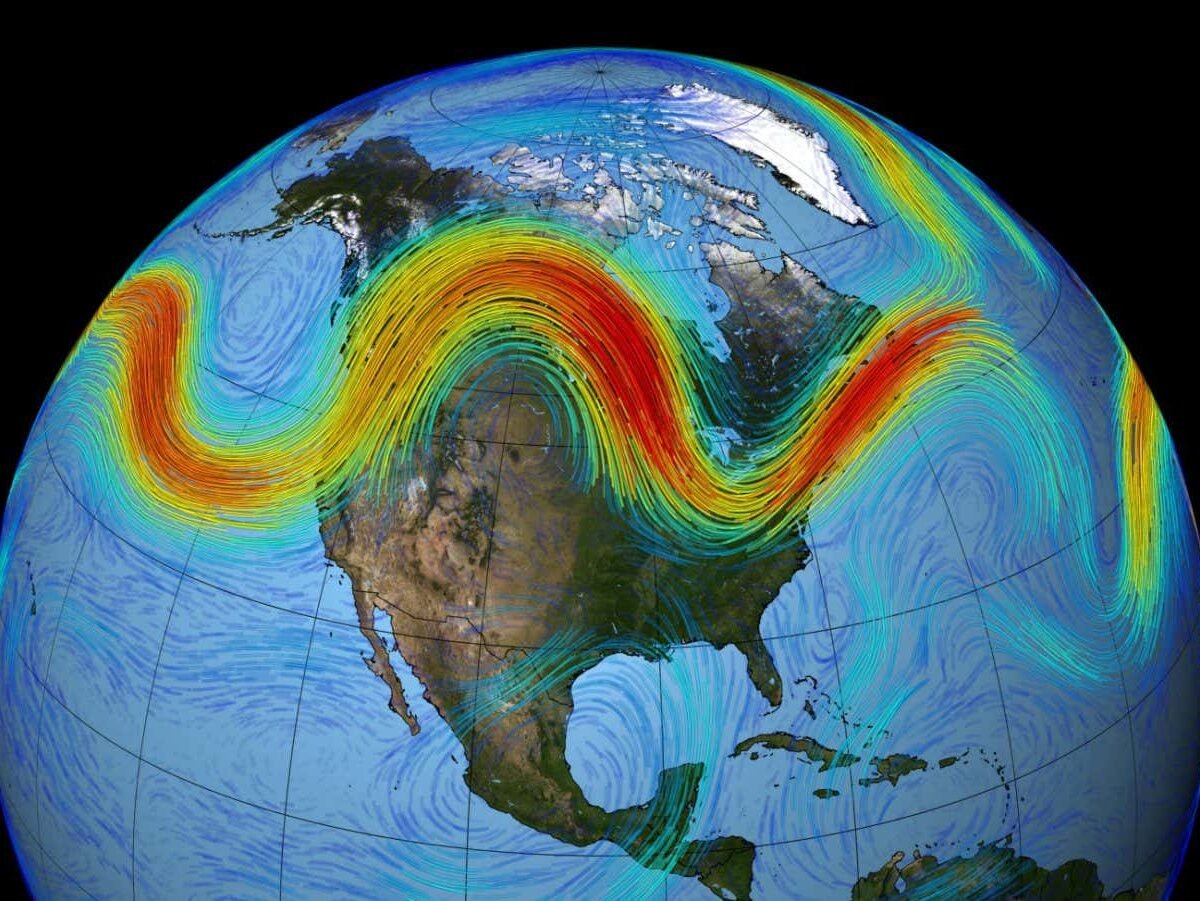
A wavy polar jet stream can bring icy storms further south
Science History Images / Alamy Stock Photo
Increasingly erratic winter weather in the northern hemisphere isn’t a result of the polar jet stream getting more wavy, according to new research – although climate change is making winter storms more intense in other ways.
The northern polar jet stream is a current of winds that sweeps through the northern hemisphere, steered by the boundaries between temperate air and cold air around the Arctic.
For more than a decade, some researchers have suspected that a warming Arctic is causing the jet stream to buckle more dramatically in the winter, causing extreme storms that bring snow and ice much further south than usual.
But the theory has been hard to verify, in part due to the relatively short satellite data record, and also because of the jet stream’s intense natural variability during the winter months.
Erich Osterberg at Dartmouth College, New Hampshire, and his colleagues set out to identify whether the recent behaviour of the jet stream is out of the ordinary compared with the long-term average.
Satellites only began collecting jet stream data in 1979, so the researchers used data on temperature and atmospheric pressure stretching back to 1901 to reconstruct the movement of the polar jet over the US for the rest of the 20th century.
They found the polar jet has experienced several periods of increased waviness during that time, suggesting the recent erratic behaviour isn’t out of the ordinary. In some instances, the winter jet stream was even wavier in the past than it is today. “What is happening now with the jet stream does not actually look all that unusual when you zoom out and look at the entire 20th century,” says Osterberg.
Winters in the northern hemisphere are becoming warmer and wetter as a result of climate change driving more intense storms and rainfall, even without the jet stream changing, stresses Osterberg. “It is clear climate change is affecting extreme weather events in all sorts of really important ways,” he says. “What we’re saying is that when it comes to the wintertime jet stream, it does not appear like the jet stream is a critical component of these changes.”
Tim Woollings at the University of Oxford says the research is a reminder of how important it is to assess long-term data when identifying changes to the polar jet stream, the behaviour of which can vary hugely over the short and medium term. “By using several long data records and a range of methods, it shows how the jet waviness in recent North American winters is no worse than in earlier decades,” he says.
It is a different story during the northern hemisphere summer, however, with mounting evidence suggesting that the polar jet is becoming wavier in the warmer months as a result of climate change driving up air temperatures in the tropics. “In the summertime, it does appear that the jet stream is seeing a fundamental change in behaviour, where it is getting slower, with bigger waves, which leads to things like big heatwaves, drought and wildfires,” says Osterberg. “That does appear to be associated with climate change.”
Topics:





